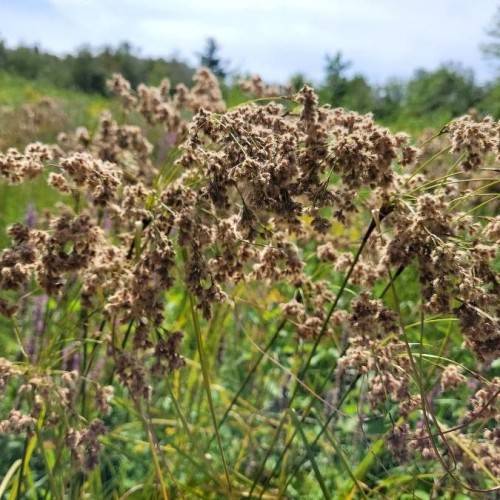
New England Bulrush
Bolboschoenus novae-angliae
Watering:
Frequent
Hardiness Zone:
Flowers:
Flowers
Sun:
Sun
Soil:
Clay, Sand, Loam
Fruits:
Fruits Ready In Summer
Leaf:
Yes
Growth Rate:
Low
Drought Tolerant:
Yes
Salt Tolerant:
Yes
Care Level:
Moderate
watering
Saltmarsh Bulrush should be watered about once a week, with enough water to reach the bottom of the soil but not so much that it is soggy. To avoid too saturated roots, it is best to ensure the soil has had a chance to dry out between waterings. The Bulrush can tolerate brief dry times, so be mindful of any rain that may occur during the week, and adjust waterings accordingly. Additionally, water during the warmer part of the day. It is best to use a season-specific fertilizer during active growth stages of Saltmarsh Bulrush. Always follow the instructions on the fertilizer package and avoid fertilizing during the winter.
sunlight
Saltmarsh Bulrush is a plant species mainly found in coastal and salt marsh environments and commonly found in North America, Europe, and Asia. It prefers full and direct sunlight and is able to tolerate a range of soil conditions, including saline and acidic soils. It is most likely to thrive in coastal habitats with ample sunlight, which typically range from 6 to 10 hours daily. Depending on the season and geographic location, the amount and intensity of sunlight available to Saltmarsh Bulrush might vary. During the summer months in northern latitudes, Saltmarsh Bulrush generally receives more sunlight than during the winter months, when the angle of the sun is lower and the days are shorter. Additionally, Saltmarsh Bulrush might receive greater amounts of sunlight in areas closer to the equator, where the sun is more direct than in regions closer to the poles.
pruning
Saltmarsh Bulrush should typically be pruned during the winter months (December to March). Pruning should be done selectively by cutting just above the base of dead and damaged stems/leaves. The amount of pruning is not as important as making sure to provide the plant with enough air circulation. Pruning too much can damage the roots and affect its natural growth.
